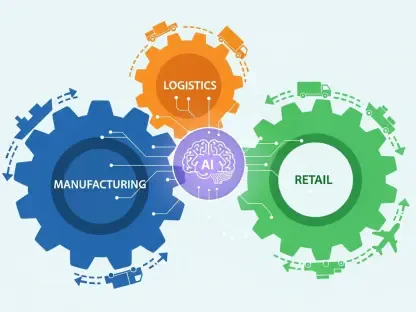Listen to the Article
Artificial intelligence is no longer just a buzzword waiting to ripen in the technological space to be implemented across industries. It is rewriting the rules of running a business as we speak. Moreover, its influence seems limitless, from automating tasks to creating music and art and even mimicking human conversation. Sure, AI can do amazing things, but venturing into uncharted territory, and that comes with risks. This article covers the rising issues of ethics, security, and job losses surrounding the governance of smart technology.
As cognitive computing capabilities increase, experts are warning more about the risks and challenges of this rapid growth—not to dampen enthusiasm, but to remind society that AI’s future is still uncertain. Therefore, thoughtful, responsible deployment is crucial, so let’s begin by investigating the groundwork for just that.
The Rise of AI: Revolution or Evolution?
Over the last decade, AI has moved out of research labs, and firms have adopted various large language models to increase efficiency, enhance the customer experience, and create a competitive advantage.
However, as many industries started implementing artificial intelligence, ranging from healthcare to finance to education, the public changed their questions from “What can AI do?” to “What should we let it do?” Plus, since experts warn businesses, governments, and individuals to use caution when deploying powerful technologies, it is no wonder everyone is on alert. Here is one real-life startup example of how the shifting tech landscape could move from optimism to wariness in an instant.
AI in the Crosshairs: OpenAI vs. DeepSeek Amid Security Concerns
As DeepSeek catches on in the AI universe, OpenAI is sounding warnings over its dangers, competition, and implications for data security. This battle isn’t about innovation with technology—it’s about the direction of AI and who holds control.
DeepSeek, a Beijing-based AI company founded earlier this year, offers a cheaper, open-source alternative to large language models from major firms like OpenAI and Google. This has raised concerns in the U.S., prompting agencies like the Department of Commerce to warn against using DeepSeek’s tools on government devices due to potential security risks and foreign interference.
The controversy grew when OpenAI advised the Office of Science and Technology Policy to limit DeepSeek’s solutions in the U.S. and its allies. They consider the alternative open-source R1 reasoning model a national security risk that might also violate U.S. intellectual property. When DeepSeek’s founder, Liang Wenfeng, met with Chinese President Xi Jinping, the situation got worse because of the potential involvement of the Chinese government.
Some experts, like Robert Caulk, are in charge of AskNews.app, rebut that DeepSeek’s nature as an open source removes any inherent Chinese government bias and thus eliminates the need for the ban. Michael Newman, however, at Graham Media Group draws attention to the main concern about user data flow rather than the models themselves.
The company stated that its goal is not to limit competitors like DeepSeek. Instead, it aims to manage any U.S. data center infrastructure that uses Chinese hardware.
Ethical Challenges, Job Displacement, and Security Risks
As DeepSeek and OpenAI lead this technological and geopolitical battle, one thing stands certain to onlookers: AI is no longer just a tool for innovation. It is now the frontline for international power and national security. The stakes are high, and what authorities decide today will affect the future of cognitive computing and its role in society. Governments and companies need to proceed cautiously in this fast-changing field because experts have serious concerns about the wider effects of artificial intelligence.
Ethical considerations are one of the crucial topics. People get prejudiced AI results if they train the AI model on biased data. The practice is already creating problems in the most sensitive areas of hiring, criminal justice, and lending, where systems using cognitive computing could unwittingly perpetuate the gaps in society.
Another primary concern is synthetic intelligence’s impact on jobs. Warnings say that if companies do not make adequate preparations, AI will continue to spread, automating everything, thus displacing a large portion of the workforce. The best possible outcome of this transformation seems to be the combination of humans’ expertise and the capabilities of smart technology.
The Importance of Human Oversight in AI
Data processing and pattern identification are the specialties of artificial intelligence tools. However, they lack the nuances of human judgment that are important when people make decisions with ethical considerations, empathy, or sway human dynamics. For instance, neural networks can process a large amount of data and advise business strategies, but they can’t consider the country-wide repercussions of such strategies.
Experts also say that advanced algorithms should never be able to act independently in settings where human judgment and oversight are required. Therefore, human decision-making should always be the core of all AI-driven processes—even sensitive or high-stakes issues.
The Need for Regulation and Ethical Frameworks
Governments are beginning to understand the severity of AI’s societal impact, but there’s still much to be done to ensure responsible development and use. Key issues include transparency in decision-making, data privacy, and addressing wrongdoing by these artificial systems.
For instance, the question of who is responsible for the harm reported by an artificial intelligence system, such as a self-driving car accident or unfair hiring, will become more precise as AI evolves. The guidelines and regulations to control these risks and use AI responsibly will also become more precise.
Initial Investment vs. Long-term Gain: Optimizing AI ROI
The initial investment in AI can be rather expensive. But you need to distinguish between short-term expenses and long-term returns. If you are worried about the initial implementation cost, you must remember that AI can drastically cut operational expenses.
The timeframe for realizing a return on investment can vary. Some companies may see immediate benefits in customer service from their investments, while others might take several years to see results. Many businesses have invested in artificial intelligence and seen returns of 15% to 30% each year over five years. AI has been particularly beneficial in supply chain management and predictive maintenance, helping industries save money and increase revenue.
With the coming of generative AI, we have realized that the outlay of running an AI workload poses an imminent problem. Inference—applying trained large language models to live, real-world data to get returns, predictions, and so on—comprises a significant chunk of these prices. Unlike training that happens periodically, inference happens continuously (with the real-time handling of many user queries and data). It is a continuous demand, which becomes a complex challenge to manage inference expenditures without inefficiencies adding up in the expense.
The Price of AI Inference: Managing Real-Time Costs
AI inference involves using trained programs to make predictions based on new data. Applying it improves performance and helps control the budget. Here is how:
The costs of using AI depend heavily on graphics processing units and special hardware, as these require extensive maintenance and resources to operate and grow.
Real-time systems, like recommendation systems or conversational AI, need fast processing and often require expensive hardware. Unfortunately, most startups must choose between speed and price.
The number of queries directly impacts the expenses required to execute scaling operations of inference systems. Enterprises that want to decrease these expenses must enhance their workload management and scaling techniques.
Balancing Implementation, Cost, and Efficiency in AI Deployment
Businesses choosing inference optimization solutions need to decide on the types of models, the infrastructure, and how they will manage operations. They often have multiple options to consider.
The following list contains best practices for implementation:
Selecting the right model size: Testing ideas during the proof-of-concept phase can help find the right size for a specific task. Smaller programs tailored for particular tasks can save costs, while larger ones work better for complex, general tasks.
Matching compute with task requirements: Not all tasks need the same computing power. By matching hardware to the needs of each task, you can lower expenditures.
Optimizing infrastructure: Using local cloud providers for computing can lower fees, speed up processes, and help meet legal requirements.
Looking Ahead: A Future Powered by AI, with Caution
AI holds remarkable potential, urging cautious planning to merge seamlessly with societal structures and commercial applications. According to experts who want them to assess its ethical, social, and financial consequences, enterprises must adopt a practical method for implementing cognitive computing. AI adoption with responsible action will enable people to access its possibilities and reduce its detrimental effects on societal structures, economic systems, and future scenarios.









